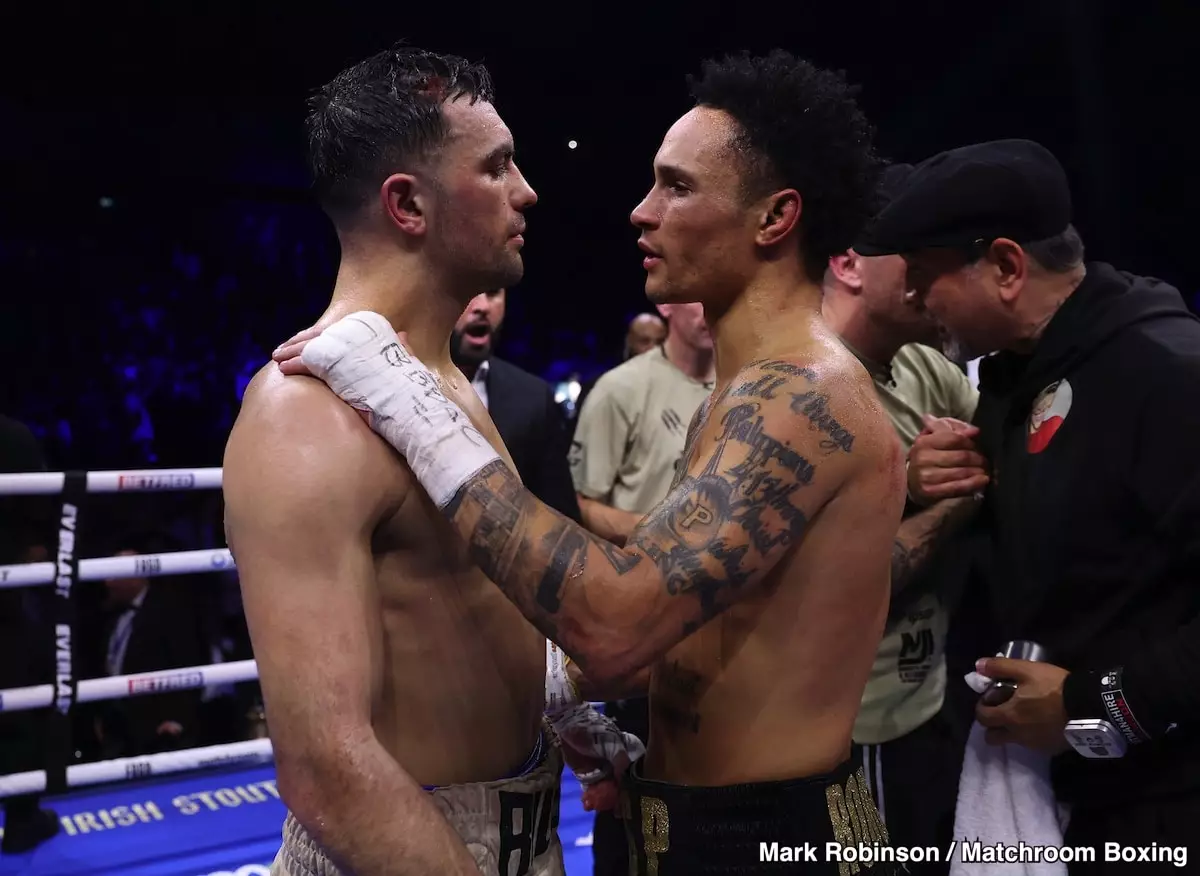The world of boxing is replete with fighters whose styles resonate differently across global audiences. Jack Catterall, a British light welterweight contender, finds himself at a crossroads that many international fighters encounter when attempting to secure a foothold in the United States. Chris Algieri, a former champion and a notable boxing analyst, recently shared his insight on Catterall’s challenge of transitioning to the American boxing scene. His critiques not only encapsulate Catterall’s fighting style but also illuminate the broader implications for foreign fighters seeking success in the U.S.
Catterall’s fighting style, characterized as cautious and safety-first, raises significant concerns in the context of American boxing. Algieri’s assertions highlight a crucial observation: in the U.S., the judges tend to favor aggressive fighters who take risks and engage fully in bouts. While Catterall brings a methodical approach to the ring, his tendency to retreat and operate defensively may not resonate well with American judges or audiences. In contrast, fighters who exude aggression, like Shakur Stevenson, often find greater success and adoration, even if their style can sometimes be polarizing.
Catterall boasts a solid record of 30 wins with only one loss; however, the nature of his victories begs scrutiny. Algieri points out that Catterall has historically faced opponents who have seen better days, raising questions about the legitimacy of his accomplishments. The scrutiny of his key fights—particularly against Josh Taylor and Regis Prograis—underscores a possible mismatch where Catterall’s defensive tactics succeeded against already diminished adversaries.
Eddie Hearn, Catterall’s promoter, faces the herculean task of marketing a fighter whose style may not captivate the American public. Hearn’s strategy appears to involve leveraging local matchups that capitalize on the most commercially viable options, but criticism lingers regarding the quality of opponents being presented to Catterall. Algieri’s insights suggest that, while Hearn may be looking for financial gain, Catterall risks becoming a fighter who is carefully matched without truly testing his abilities against top-tier competition.
The case of Liam Paro as a potential opponent further complicates Catterall’s road ahead. Paro, who has shown significant promise and ability in the ring, represents a potential high-stakes challenge for Catterall. While facing such a tough opponent could be beneficial for Catterall’s career if he wins, it also poses the possibility of exposing his limitations if he fails to adapt his style to a more aggressive setting.
One of Algieri’s more provocative claims is the cultural disparity between the British and American boxing styles. He argues that British audiences appreciate and understand the intricacies of boxing—such as footwork and strategic retreat—better than their American counterparts, who often prefer straightforward aggression and entertaining bouts. This cultural divide presents a formidable barrier for Catterall, who needs to navigate the intricacies of boxing while contending with a style that may not elicit excitement or applause in the U.S.
Drawing parallels with other notable fighters, Algieri mentions how even successful boxers with strategic boxing skills eventually face challenges when their style doesn’t align with audience expectations. Catterall’s history of relying on distance and a defensive approach could see him experience similar hurdles, especially if he doesn’t adapt when crossing the Atlantic.
As Catterall eyes the American market, the path forward is fraught with difficulty. He must not only find ways to engage more effectively in fights but also identify opponents who can elevate his profile without compromising his fighting style. The need for strategic matchmaking becomes increasingly critical; victories that enhance his reputation while showcasing his adaptability may be the key to succeeding in a fiercely competitive arena.
Meanwhile, Hearn’s plans to keep Catterall within the UK indicate a cautious approach geared towards maintaining control over his fighter’s narrative. However, this strategy could ultimately isolate Catterall from the opportunities that come from competing against the best in the U.S. Therefore, the coming months will be essential in determining not only Catterall’s future but also his ability to resonate with an audience that values engagement and excitement in the ring.
While Jack Catterall possesses the potential for success as a fighter, the concerns articulated by Chris Algieri underlie a complex web of challenges that he must navigate in his quest for American audiences. As always in boxing, the dance between style and substance is paramount, and for Catterall, the stakes have never been higher.


Leave a Reply